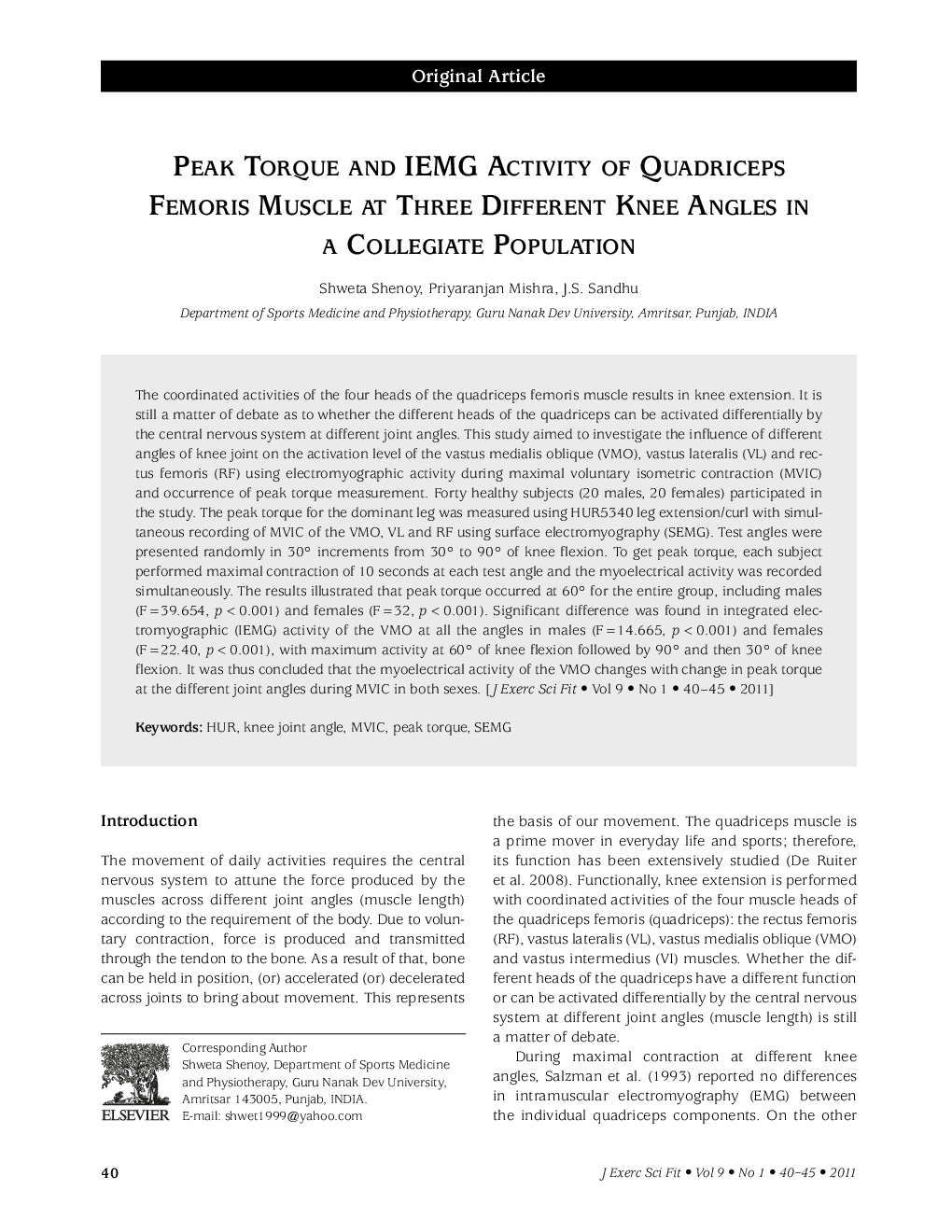| کد مقاله | کد نشریه | سال انتشار | مقاله انگلیسی | نسخه تمام متن |
|---|---|---|---|---|
| 2739695 | 1148437 | 2011 | 6 صفحه PDF | دانلود رایگان |

The coordinated activities of the four heads of the quadriceps femoris muscle results in knee extension. It is still a matter of debate as to whether the different heads of the quadriceps can be activated differentially by the central nervous system at different joint angles. This study aimed to investigate the influence of different angles of knee joint on the activation level of the vastus medialis oblique (VMO), vastus lateralis (VL) and rectus femoris (RF) using electromyographic activity during maximal voluntary isometric contraction (MVIC) and occurrence of peak torque measurement. Forty healthy subjects (20 males, 20 females) participated in the study. The peak torque for the dominant leg was measured using HUR5340 leg extension/curl with simultaneous recording of MVIC of the VMO, VL and RF using surface electromyography (SEMG). Test angles were presented randomly in 30° increments from 30° to 90° of knee flexion. To get peak torque, each subject performed maximal contraction of 10 seconds at each test angle and the myoelectrical activity was recorded simultaneously. The results illustrated that peak torque occurred at 60° for the entire group, including males (F = 39.654, p < 0.001) and females (F = 32, p < 0.001). Significant difference was found in integrated electromyographic (IEMG) activity of the VMO at all the angles in males (F = 14.665, p < 0.001) and females (F = 22.40, p < 0.001), with maximum activity at 60° of knee flexion followed by 90° and then 30° of knee flexion. It was thus concluded that the myoelectrical activity of the VMO changes with change in peak torque at the different joint angles during MVIC in both sexes.
Journal: Journal of Exercise Science & Fitness - Volume 9, Issue 1, 2011, Pages 40-45